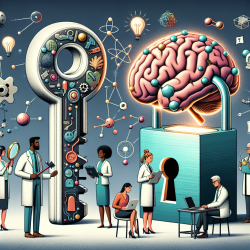Introduction: The Promise and Pitfalls of EdTech
In the wake of the COVID-19 pandemic, the educational technology (EdTech) sector has exploded with new tools and platforms aimed at enhancing learning experiences. However, despite the availability of these innovative solutions, only a small fraction of educators believe that EdTech is significantly effective in improving learning outcomes. This gap between potential and performance raises an important question: How can we ensure that EdTech products truly benefit students?
The Science of Learning and EdTech
The recent research article "Applying the Science of Learning to EdTech Evidence Evaluations using the EdTech Evidence Evaluation Routine (EVER)" offers valuable insights into this challenge. The authors emphasize the need for a systematic approach to evaluating EdTech products based on scientific standards. They propose the EdTech Evidence Evaluation Routine (EVER) as a tool to guide educators, developers, and investors in assessing the effectiveness of EdTech solutions.
Understanding the EVER Framework
The EVER framework provides a structured method for evaluating EdTech products. It considers several key factors:
- Methodological Quality: Are the evaluation methods sound and justified? Is the EdTech tested on a representative sample?
- Outcome Strength: Does the EdTech have a measurable impact on learning outcomes?
- Generalizability: Can the results be applied to a broader population?
- Ethics and Transparency: Are data collection and user interactions ethical and transparent?
By applying these criteria, educators and stakeholders can make informed decisions about which EdTech products to adopt.
Why Evidence Matters
Evidence-based evaluation is crucial for several reasons:
- Ensures Effectiveness: Products backed by evidence are more likely to deliver on their promises.
- Builds Trust: Transparent evaluations foster trust among educators, parents, and students.
- Promotes Accountability: Developers are encouraged to create products that genuinely enhance learning.
Encouraging Further Research
The EVER framework is not just a tool for evaluation; it is also a call to action for further research. By encouraging collaboration between EdTech developers, researchers, and educators, we can bridge the gap between innovative technology and effective learning solutions.
Conclusion: A Path Forward
As we navigate the ever-evolving landscape of educational technology, it is essential to prioritize evidence-based practices. The EVER framework offers a promising path forward, enabling us to harness the full potential of EdTech to enhance learning outcomes. By adopting a systematic approach to evaluation, we can ensure that EdTech products not only meet educational needs but also contribute to a brighter future for students worldwide.
To read the original research paper, please follow this link: Applying the science of learning to EdTech evidence evaluations using the EdTech Evidence Evaluation Routine (EVER).










